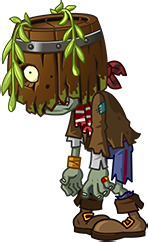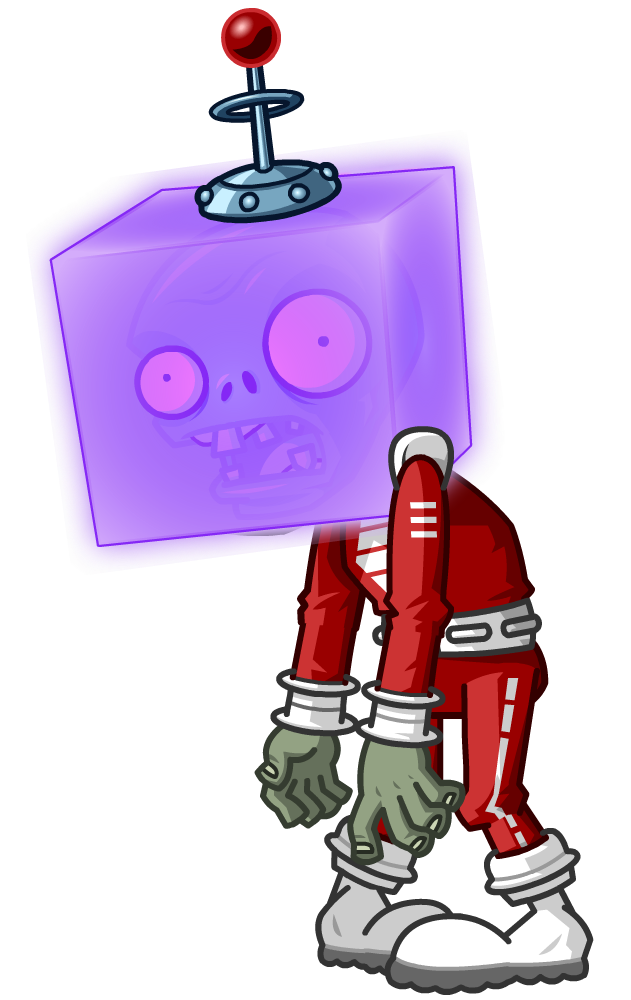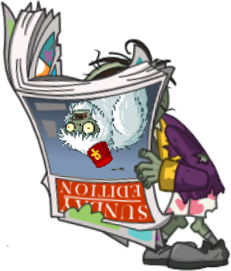Project Overview
I started on Plants vs. Zombies 2 in August of 2016, at which point the game was over three years old! PvZ2 had gone through several different design directions over the course of its life, but when I arrived, it was an exciting time to be there. We were ramping up on a new feature called "Power Plants," which, upon release, changed the face of the game significantly.
Platform
iOS/Android
Where
PopCap Games
My Role
Game Designer
Timeline
Aug 2016-Aug 2017
Power Plants
Internally, the Power Plant update was known as "Core Loop." The joke, of course, being that the game had been out for three years before we'd gotten around to designing a core loop for it.
In Power Plants, players collect various pinatas as rewards from completing quests or sets of limited-time levels. Each pinata is a "card pack" that contains a random selection of seed packets. (Players can limit the selection pool by opening pinatas that contain only plants from, say, the Ancient Egypt world.)
Using these seed packets and gold earned from playing the game, players upgrade their plants in all sorts of ways. Upgraded plants deal more damage, cost less sun to plant, have more health, and have shorter cooldown times on planting.
When I started on PvZ2, I took over the plant balance, figuring out exactly how plants would upgrade at each level. There were a lot of plants in the game, (more than 110 at the time I started,) so this was a big chunk of work.
Power Plants ended up being a huge success for the game. When the feature launched in January 2017, we saw increases of more than 30% in both player retention and monetization. That's especially huge for a game as old as PvZ2. With further support for the feature, those numbers improved even more.
Veteran Zombies and Spine Expansion
With the release of Power Plants, we were faced with a new problem, albeit one we'd seen coming: we'd given players more powerful plants, but hadn't given them more difficult content to use the plants on.
With that in mind, I began designing new content for our main level progression, or "spine" levels. Starting with the Ancient Egypt and Modern Day worlds, I created 10 new, extremely difficult levels, including a tough new Zomboss Battle at the end. The intention was for players to be unable to beat all of them without investing some time into leveling up their plants through Power Plants.
One way to make these levels harder was through the introduction of new "Veteran Zombies." These took two forms.
First, I continued the existing Browncoat > Conehead > Buckethead progression by adding a new, even more difficult tier of zombie armor, known generally as the Brickhead. (Some worlds, e.g. Dark Ages, already had a more difficult tier, but the Brickhead-tier leapfrogged that one and had the same toughness across all worlds.)
There were also the actual veteran zombies: more powerful versions of our existing special zombies. To make these, I improved the zombie's stats or gave them new abilities depending on what made the special zombie dangerous in the first place.
For example, Ancient Egypt's Explorer Zombie was dangerous because of his speed: he'd quickly reach your plants and then instantly burn them up. The veteran Explorer, a.k.a. the Torchlight Zombie, had his speed and health increased, so he became a priority target to take down as soon as he appeared.
The veterans were the first new zombies to be released for the game in over a year, so players were especially excited to see new content, even if they were soon stunned by how hard it was to beat!
Zombie Scaling
To further the goal of providing players with difficult content on which to put their leveled-up plants to use, we introduced the concept of scaling zombies.
Scaling used a simple algorithm: each time a zombie leveled up, a set multiplier would be applied to its health and damage output. This multiplier was cumulative, so the increase would be greater each time.
We first released this feature in a series of epic quests to determine its viability. We were especially interested in finding out just how strong zombies could get and still have players win with the full range of available leveled-up plants.
Our most drastic such release was a series of three, chained, 10-level epic quests, starting with zombies at level 1 and increasing each time, with zombies finally culminating at level 30. It turned out that dedicated players could get well into the teens before failing, which gave us excellent information on the true power level of our plants. We tracked which specific plants were used to win at those high levels, so we learned exactly which plants are the most overpowered.
Inzanity: Procedural Level Generation
PopCap had long been talking about a full procedural system to generate new levels, and we finally tackled it in mid-2017. LevelGen, as we called it internally, was meant to address a few key goals:
- Retention: Keep players engaged by giving them new levels and quests every day.
- Design Cadence: Remove the need for designers to spend a big chunk of their time on level design, in order to focus on new features.
- New Content: Give ourselves a platform to potentially host new zombies and obstacles in future development, without needing to build an entire new world.
The parameters behind LevelGen were extensive. Our goal was on improving granularity in difficulty changes over the pre-existing "Endless" levels in the game. To give the parameters some limitations, we limited a level generated in a specific world to only use the zombies and obstacles already found in that world. Modern Day, of course, still had access to nearly all of them, so it was as crazy as ever.
In an unusual move for PopCap, Inzanity was launched without extensive balance testing. There were so many variations on potential levels, (literally millions,) there was no way we'd ever be able to test them all. The content strategy was to launch, get data on player behavior and win rates, flag problematic seeds, and respond quickly with changes and tuning.
To ensure that players never got stuck behind an unwinnable level, we allowed them a way to generate a new level for themselves. If they quit and re-entered the level, a new seed would be used for level generation, while simply restarting the level would let them retry the same seed, if they so desired.


















